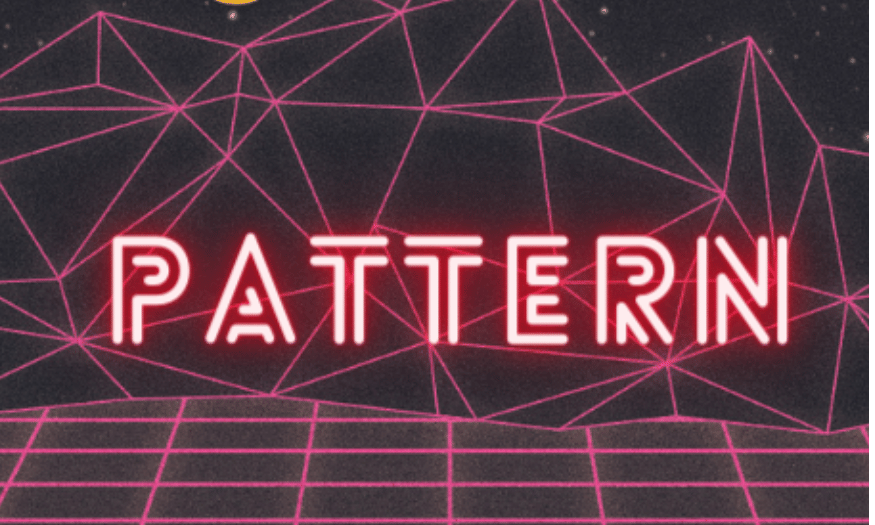Best Selling Products
Gestalt Principles: Measures for Enhancing Aesthetics
Nội dung
Gestalt principles, an important concept in psychology, have become a powerful tool in design and art. Developed in the early 20th century, this principle emphasizes the way people perceive and organize information. In today's context, applying Gestalt principles not only helps create highly aesthetic products but also improves communication efficiency and user experience. In this article, Sadesign will explore with you in depth the Gestalt principles, from closeness, similarity to simplicity, and how they can be applied to create impressive and sophisticated designs.

Gestalt principles, an important concept in psychology, have become a powerful tool in design and art. Developed in the early 20th century, this principle emphasizes the way people perceive and organize information. In today's context, applying Gestalt principles not only helps create highly aesthetic products but also improves communication efficiency and user experience. In this article, Sadesign will explore with you in depth the Gestalt principles, from closeness, similarity to simplicity, and how they can be applied to create impressive and sophisticated designs.
1. Introduction to the Gestalt concept
Gestalt principles are one of the most important concepts in psychology, especially in the fields of design and art. These principles help us understand that complex shapes can be reduced to basic shapes, thereby creating attractive and accessible works. They show that people tend to grasp the whole picture rather than pay attention to isolated, separate details. This explains why a painting or a design can make a strong impression at first glance, thanks to the ability to organize images in a logical and harmonious way.
The concept of “Gestalt” comes from German, meaning “shape of an object” or “general view”. Discovered by psychologist Max Wertheimer in the early 20th century, this principle quickly attracted the attention of many other researchers such as Wolfgang Köhler, Kurt Koffka and Wolfgang Metzger. They developed and expanded on these principles, helping us better understand how people perceive and organize information in their minds.
In this article, we will explore the prominent Gestalt principles, including the principles of Similarity, Proximity, Unified Connectedness, Continuation, Prägnanz, Closure, and Figure-Ground. These principles not only have theoretical value but also have practical applications in modern design and art.
2. Principle of Similarity
The principle of synchrony, also known as the principle of similarity, is one of the basic principles of Gestalt theory. This principle states that our eyes tend to group objects that are similar in shape, color, or size together. This happens naturally, even when the objects are not next to each other. The brain creates an invisible connection between them, making us feel that they are more closely related to each other than other dissimilar elements. Thanks to this ability, people can quickly recognize and categorize information in their surroundings.
Consistency is not just about shape and color, but also about size and other elements. When similar objects are placed close together, the brain automatically recognizes and makes associations between them. This is important in design, especially in interactive products like websites and apps. By applying the principle of consistency, designers can help users easily grasp information and better understand the relationships between different elements.
In interface design, using consistent elements such as color, font, and shape can increase intuitiveness and ease of use. For example, links on a website are often designed to be distinct in color and style so that users can easily recognize them. When users see a piece of text that is blue and underlined, they automatically perceive it as a link. Similarly, in a navigation menu, using consistent elements to differentiate information items in the same hierarchy helps users quickly find the information they need.
.png)
3. Proximity Principle
The principle of proximity, or the principle of juxtaposition, states that elements that are close together tend to be grouped together as a single unit in human perception. This can be seen in the way we read and understand information. When blocks of text are arranged logically, the spacing between them helps readers easily distinguish different ideas or information. Without clear spacing, readers will feel confused and have difficulty seeing the relationship between information.
For example, in books and websites, paragraphs are often spaced apart to create separation and ease of reading. Each paragraph usually has a separate topic, and without proper spacing, readers will have difficulty determining whether the information is related or not. This is especially important in content design, where organizing information clearly helps users quickly grasp the main idea.
When applying the proximity principle, designers should pay attention to how elements are arranged in space. Using appropriate spacing between paragraphs, images, and other elements will not only make it easier for readers to understand information, but also make the content more pleasant to approach. If a website is filled with text without any spacing, readers will feel overwhelmed and easily get lost in the millions of information.
4. Unified Connectedness
The principle of unity, or the principle of connection, states that elements that are somehow connected by color, line, or shape will be perceived as closely related. This can happen even if the elements are not identical, as long as there is a connecting element that creates the connection. The principle of unity is often considered one of the most powerful principles in Gestalt theory, because it has the ability to override other principles when necessary.
A classic example of the principle of unity is when a line connects two different shapes, such as a square and a circle. Even though they are not the same shape or size, when connected by a line, the brain perceives that they have a certain relationship. In design, this can be used effectively to create connections between elements in an interface.
To apply the principle of unity in design, designers can create connections between interactive elements, such as buttons, menus, or list items. A specific example is arranging the input fields for login, password, and sign up buttons in the same frame. This not only helps users identify the information easily, but also creates a more coherent and intuitive user experience.
The principle of unity not only enhances usability but also creates a sense of harmony and unity in design. When elements in an interface are logically connected, users will feel more comfortable interacting and finding information.
.png)
5. Continuity Principle
The principle of continuity is one of the key principles in Gestalt theory, which explains how the human mind automatically looks for connections and continuous movement between elements. When we look at a series of images or lines, we not only perceive each part separately, but also tend to “connect” them together to form a complete and coherent image. Whether straight or curved, the brain wants these elements to move toward a common destination, thereby creating a sense of continuity and harmony.
This continuity can be used in design to create impressive and easily understood pieces. For example, in a logo with curved lines, the brain automatically perceives movement and connection between the elements, making it easier for viewers to remember and recognize the brand. This shows the importance of using positive and negative space in design. The space between elements not only helps to separate them but can also connect them together in the eyes of the viewer.
Applying the principle of continuity not only enhances visual appeal but also creates a better user experience. When designing user interfaces, pay attention to how elements are arranged. If buttons, links and information are arranged in a continuous and logical manner, it will be easier for users to interact and find information. This principle not only helps highlight important elements but also creates a smooth and pleasant user experience.
6. Prägnanz Principle
The Prägnanz Principle, which comes from German and means “minimalism” or “inherent essence,” states that humans tend to reduce and organize complex information into simpler, more understandable forms. Our minds are not used to disorder or complexity, and to avoid being overwhelmed by bizarre images, we automatically seek simplicity and clarity in what we observe.
A classic example is when we look at a picture of five imperfect circles, we can easily recognize them as circles. Even though the actual shapes may be imperfect, our brains still “fill in” the gaps and simplify them into familiar shapes. This is a testament to the power of the Prägnanz principle in helping people quickly recognize and understand information.
This is also important in design, especially when creating wireframes for websites. Using basic shapes to model a layout helps designers visualize how the content will be arranged. This principle shows that design doesn’t have to be complicated; sometimes, simplicity is the key to maximum effectiveness.
.png)
7. Closure Principle
The closure principle is an interesting phenomenon in Gestalt psychology, which suggests that humans have the ability to “complete” incomplete images in their minds. When an object has an incomplete or incomplete shape, the human eye tends to fill in the gaps to create a complete image. This allows us to recognize and understand images more easily, even when they are not completely drawn.
For example, when we look at a broken circle, we can still visualize it as a complete circle because our brains automatically connect the dots. This principle can be applied in design to create innovative artwork and interfaces. By using incomplete shapes, designers can engage the viewer’s imagination and create a more enjoyable experience.
In fact, applying the principle of closure can help simplify a design and make it more appealing. When creating logos or icons, using an incomplete but recognizable shape can create a powerful impression and make the viewer feel closer to the brand. This principle encourages creativity and helps designers explore new ways to communicate and connect with their audience.
8. Common Fate
The swarming principle, also known as the principle of common fate, refers to how objects are perceived as closely related if they are moving in a certain direction. This does not necessarily require the objects to be in actual motion, but rather that there are signs that they are moving toward the same destination. For example, drawing arrows pointing in the same direction will automatically give the viewer the impression that these objects are related.
This principle is useful in graphic design and user interfaces. When elements on a website or in an application move or are arranged in the same direction, they create a sense of unity and recognition. This makes it easier for users to understand the relationship between the elements and guides them through the interaction. For example, if a group of icons or buttons are arranged in a straight line, it is easier for users to recognize that they have the same function or purpose.
Applying the herd principle in design not only creates harmony, but also helps users feel more comfortable interacting with the components on the interface. When all the elements in a design point in the same direction or have a clear connection, users will feel like they are part of a unified "herd", thereby creating a more intuitive and easier experience.
.png)
9. Figure-Ground Principle
The figure-ground principle represents the human eye's natural ability to distinguish between the main subject and the background when looking at a photograph or image. The consistency of this principle depends on the viewer's ability to recognize it, as well as the level of contrast between the main and secondary elements.
A striking example of the principal-subordinate principle is that images can generate multiple interpretations. For example, a painting can be seen as a face or a vase, depending on how the viewer focuses on the elements in the image. This instability suggests that the brain is not simply recognizing images, but is always looking for meaning and relationships between elements.
To apply the primary-secondary principle in design, designers need to enhance the contrast between primary and secondary elements. If you want the primary content to stand out and attract attention, make sure it is clearly differentiated from the background. This can be achieved through the use of different colors, sizes, brightness, and styles. Otherwise, viewers may become confused and not know which information is the most important in the design.
The primary-secondary principle not only helps create a design that is intuitive and easy to understand, but it also improves the user experience. When viewers can easily distinguish between primary and secondary elements, they will feel more comfortable and have an easier time interacting with the content. Therefore, applying this principle is very important in any type of design, from graphics to user interfaces.

10. Conclusion
Gestalt principles are not just an abstract theory, but also a powerful practical tool for designers, artists, and marketers. By understanding and applying these principles, we can create works that are not only beautiful to look at, but also provide a profound experience for the viewer. In an increasingly complex world, using these basic principles will help us maintain aesthetics and effectiveness in visual communication. Let the Gestalt principles guide us to new and inspiring creations!












































